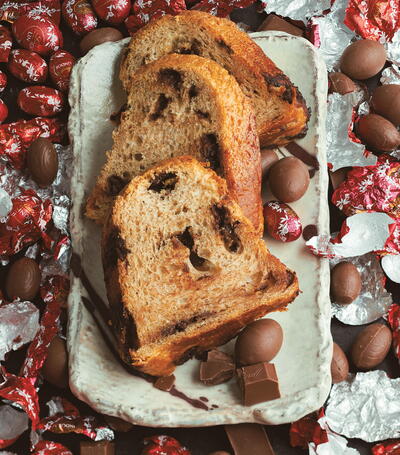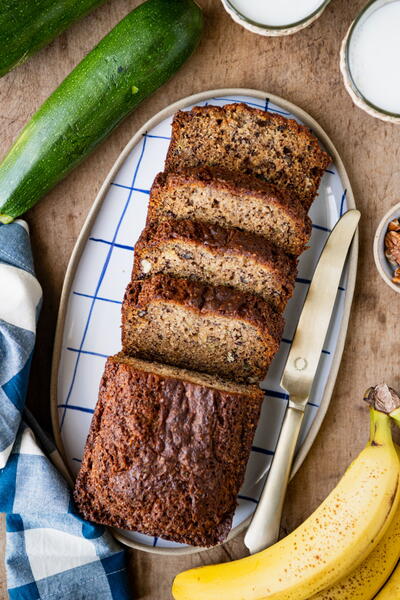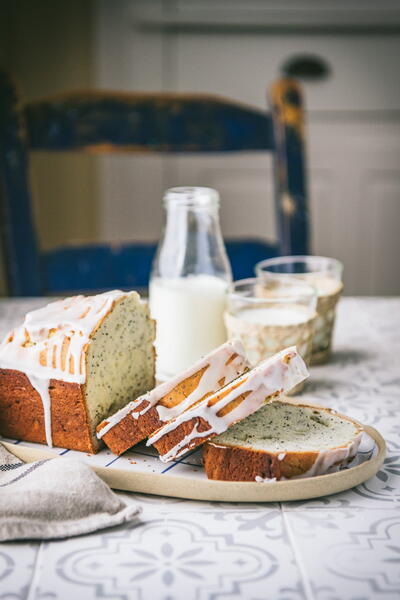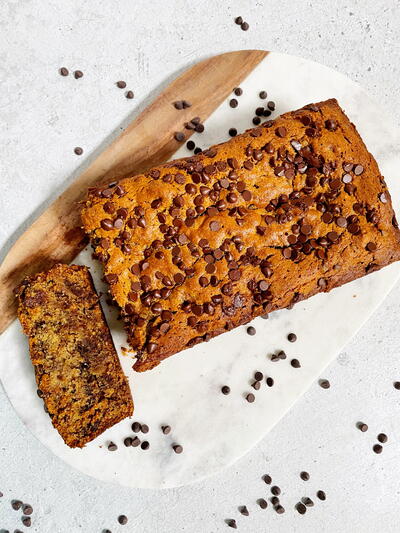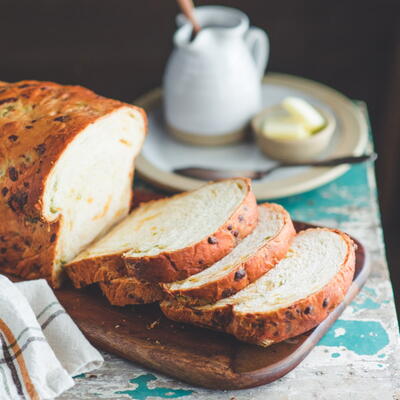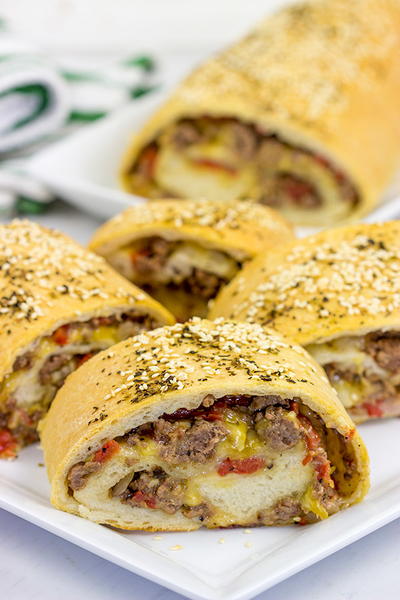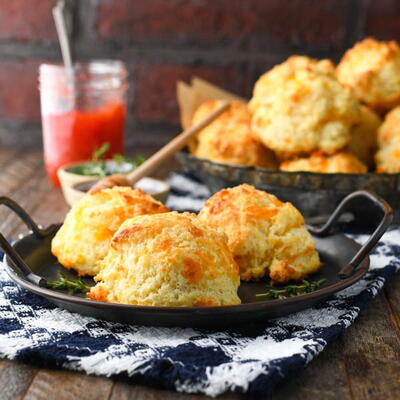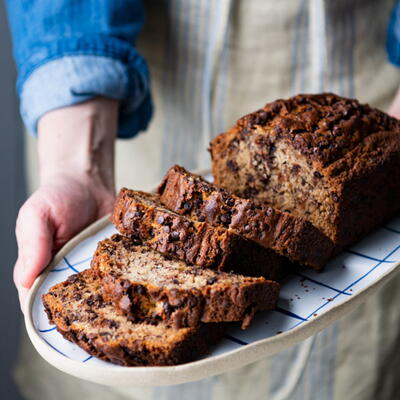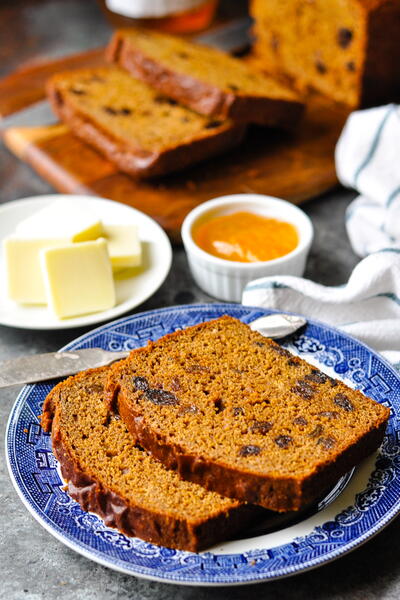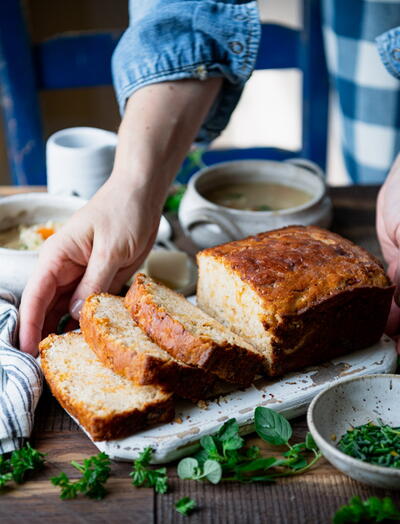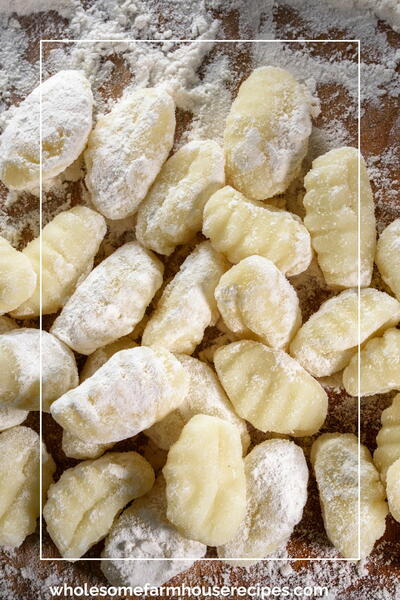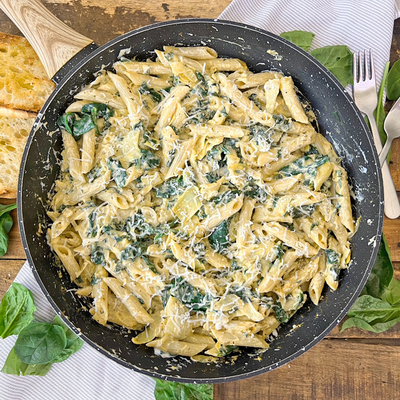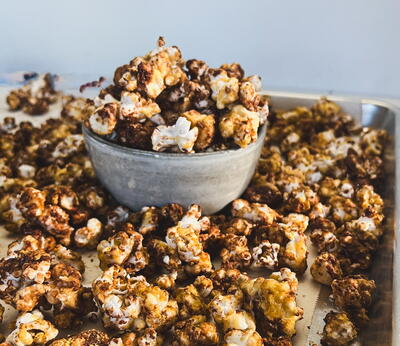Holiday Chocolates Enriched Bundt Tin Loaf
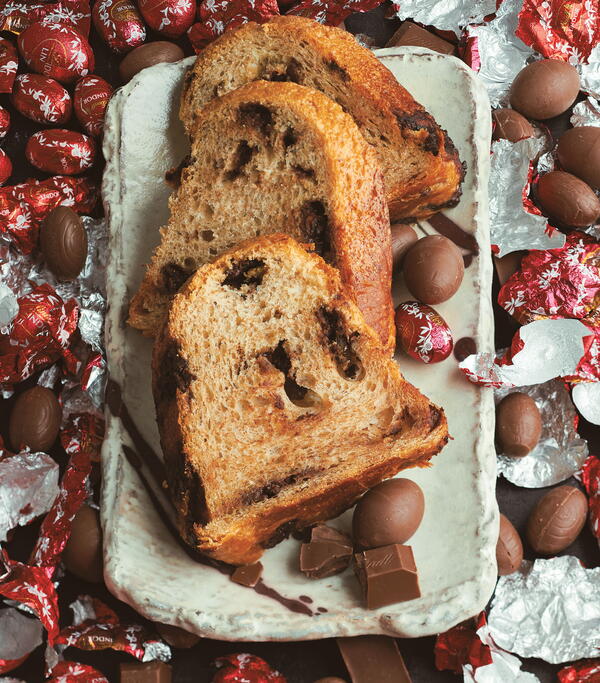
In our house, we end up with collections of chocolates from various holidays, so one day I decided to collect all of them, chop them into pieces and add them to an enriched dough featuring spelt flour. This is how this loaf was created and it was so good, I then made it five more times in two weeks! The bread is so soft and light, and the added chopped chocolate pieces are spread evenly through the loaf, providing bursts of sweetness and a perfect treat. Eat it unadorned or with butter or sharp cheese. This loaf is a winner in our house.
Equipment:
- A 12-cup (2.8-L) Bundt tin, 10½ inches (27 cm) in diameter and 4½ inches (11.5 cm) deep. My Bundt tin is nonstick.
Makes1 Bundt loaf
Ingredients
- 100 grams (1/2 cup) active starter
- 350 grams (1 1/2 cups) oatmilk, cold or at room temperature (you can also use reduced-fat or 2% milk, full-fat/whole milk)
- 50 grams (1/4 cup) butter (I use slightly salted butter), at room temperature
- 50 grams (1/4 cup) runny honey
- 350 grams (2 2/3 cups) strong white bread flour
- 150 grams (1 1/4 cups) whole wheat spelt flour
- 200 grams (1 cup) chopped chocolate (cut into halves or approximately 1/2-inch [1.3-cm] pieces, see Top Tips)
- 7 grams (1 tsp) salt, or to taste
DIRECTIONS
-
In the early evening, in a large mixing bowl, roughly mix together all the ingredients. It will be a sticky, lumpy dough, and it may be easier to use a bowl scraper or spatula to mix it at this stage. The butter will not be fully mixed through yet; it will become mixed in fully as you complete the next steps. Cover the bowl with a clean shower cap or your choice of cover and leave the bowl on the counter.
-
After 2 hours, perform the first set of pulls and folds on the dough, lifting and pulling the dough across the bowl until it starts to come into a soft ball, then stop. During this first set of pulls and folds the dough will still be sticky, studded with the chocolate pieces throughout, surrounded by dough that quickly becomes smooth. Cover the bowl again and leave it to sit on the counter.
-
After another hour, perform another set of pulls and folds on the dough, covering the bowl afterward. This will be a big, smooth and stretchy dough studded with the chocolate pieces, and will come together into a soft ball. Cover the bowl again.
-
Leave the covered bowl on the counter overnight, typically 8 to 12 hours, at 64 to 68°F (18 to 20°C).
-
In the morning, hopefully the dough will have grown to double in size. If the dough has not doubled yet, allow it a few more hours to continue to proof. This is a heavy dough and may take longer than a standard water-based dough to fully proof.
Have your Bundt tin ready. My Bundt tin did not need to be greased; however, I recommend spraying it with light layer of neutral oil, or greasing the inside of your Bundt tin with butter, if you know that your pan works best this way or it is a new tin that you have not used before.
Once the dough is two times its original size, gently but firmly perform a final set of pulls and folds on the dough to pull it into a ball. The dough will be big and bouncy and studded with chocolate pieces. Pick up the ball of dough in one hand and use your forefingers from your other hand to ease a hole into the middle of it. Next, place it smooth side down into the prepared Bundt pan, placing it over and tucking it around the upright part in the middle of the pan, and then cover it with the same shower cap. Allow the dough to proof again, letting it grow to approximately halfway up the side of the pan. This may take 2 to 4 hours, depending on the temperature of your kitchen. The dough will spread into the pan.
-
When you are ready to bake, decide whether you would like to bake in a preheated oven or from a cold start. Place parchment paper, followed by a baking sheet, on the top of the Bundt pan to serve as a lid. If preheating, set the oven to 325°F (160°C) convection or 350°F (180°C) conventional.
-
If you preheated the oven, bake the loaf, covered, for 55 to 60 minutes. If you are using a cold start, place the covered pan of dough in the oven, set the temperature as above and set a timer for 60 to 65 minutes, or until it is nicely browned.
-
Remove the loaf from the oven, remove the baking sheet and paper, allow the loaf to cool for 5 minutes and then turn it out onto a wire rack to cool. If you would like the loaf to have more color, return it to the oven, on the rack, sitting on a baking sheet, and bake it uncovered for 5 to 10 minutes. Then remove it and let it cool before slicing.
Top Tips:
I use leftover mini chocolate truffle eggs and various filled bars of chocolate. I have also made this recipe using chopped solid chocolate and chopped-up pieces of chocolate orange, all of which worked perfectly.
To hold the baking sheet in place over the Bundt tin, I place ceramic baking beads in it.
Read NextCheese Biscuits

